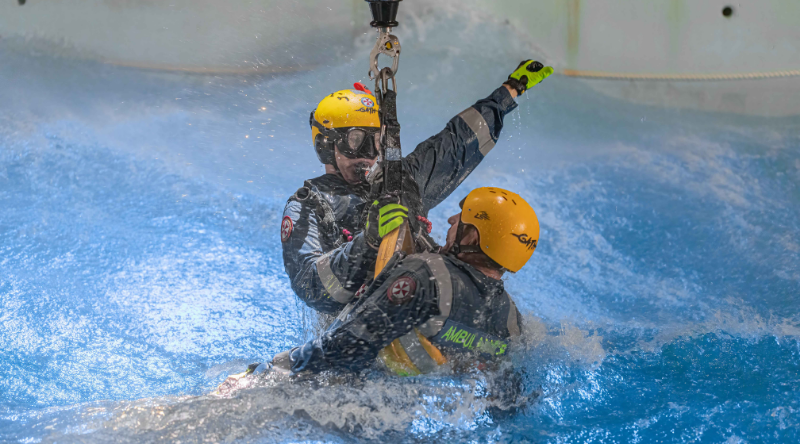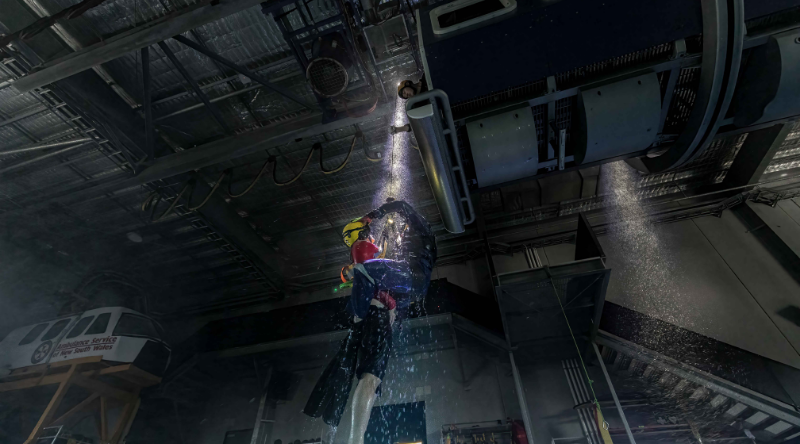
As detailed in last month’s edition of Sirens, the rigours of training to become a critical care paramedic are intense and repetitive in order to ensure things go to plan as best they can during a rescue.
The thing is, when it comes to saving lives, not everything always pans out as intended.
So, what do the men and women in these roles do when things don’t go to plan?
They make sure there is always a back-up – and one that is well-tested to ensure the safety of the team and patients.
An example of this is being carried out right now at the Aeromedical Crewing Excellence (ACE) Training Centre’s Helicopter Underwater Training (HUET) facility.
As part of the Cycle 3 training and assessment program, our helicopter-based flight paramedics have had their aquatic skills put to the test in an unorthodox scenario they may be faced with for real during a rescue.
While critical care paramedics generally put on a wetsuit for water-based rescues, some sudden rescues don’t afford them the time to suit up.

Aeromedical Operations’ Education and Training Manager, Paul Kernick, said this scenario – which does happen from time to time – means rescuers have to take action while still wearing their flight suit, which is what they were tasked to do as part of the Cycle 3 training program.
“We have risk assessments for everything we do and when we fly around, say in a water mission, we kit up in our wetsuits… that’s our normal PPE we wear into water rescues,” he said.
“But occasionally if we are transiting from point A to point B we get diverted mid-flight to somebody drowning in the water. It can be just minutes before we are on top of them and it doesn’t give us time to change out of our flight suit into our wetsuit.
“So that poses more of a risk to us because we could be just hovering over the top of somebody drowning and half-dressed, and then that would open us up to an error.
“We have this capability (wearing the flight suit for a water rescue) on a rescue close to the coast (one kilometre or less to shore), and in an area where we have other support systems in place to protect us if we get separated from the hook.”
Paul said the flight suit rescue training was particularly important for those who hadn’t experienced it before, given a wetsuit offers better buoyancy and mobility.
He said under no circumstances would they not wear a wetsuit if departing directly from base to a rescue.
Critical care paramedics based in Lismore, Newcastle, Wollongong and Sydney are required to take part in the training and assessment program, with this component run twice per year.
